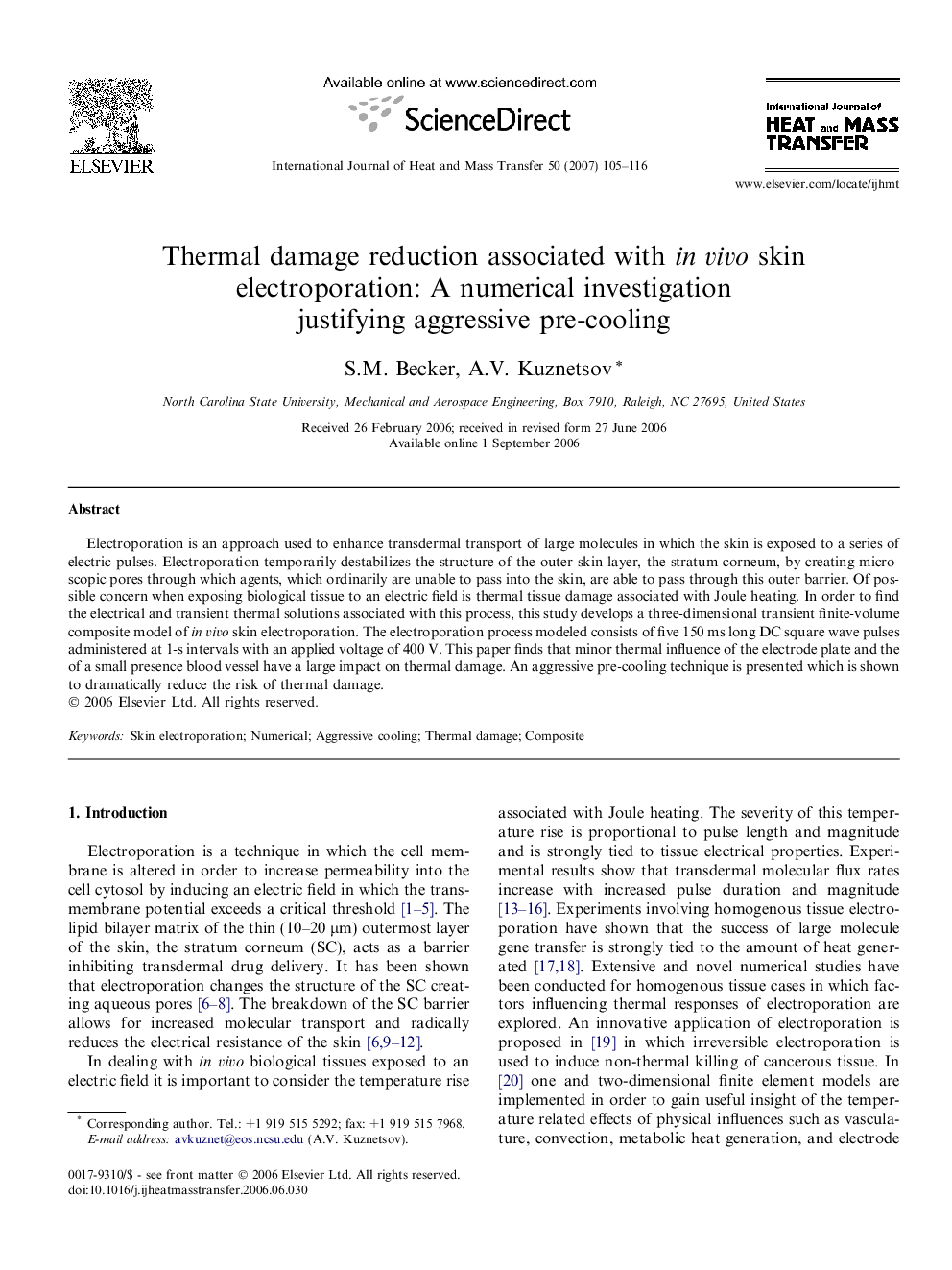| Article ID | Journal | Published Year | Pages | File Type |
|---|---|---|---|---|
| 663284 | International Journal of Heat and Mass Transfer | 2007 | 12 Pages |
Electroporation is an approach used to enhance transdermal transport of large molecules in which the skin is exposed to a series of electric pulses. Electroporation temporarily destabilizes the structure of the outer skin layer, the stratum corneum, by creating microscopic pores through which agents, which ordinarily are unable to pass into the skin, are able to pass through this outer barrier. Of possible concern when exposing biological tissue to an electric field is thermal tissue damage associated with Joule heating. In order to find the electrical and transient thermal solutions associated with this process, this study develops a three-dimensional transient finite-volume composite model of in vivo skin electroporation. The electroporation process modeled consists of five 150 ms long DC square wave pulses administered at 1-s intervals with an applied voltage of 400 V. This paper finds that minor thermal influence of the electrode plate and the of a small presence blood vessel have a large impact on thermal damage. An aggressive pre-cooling technique is presented which is shown to dramatically reduce the risk of thermal damage.
